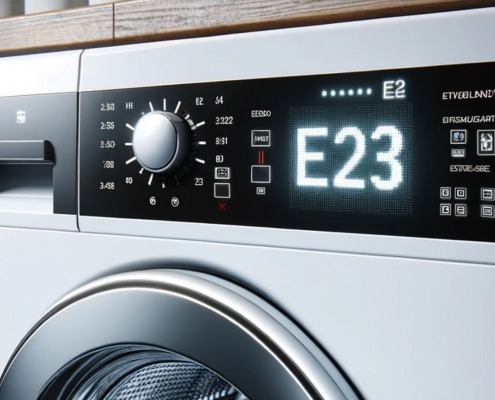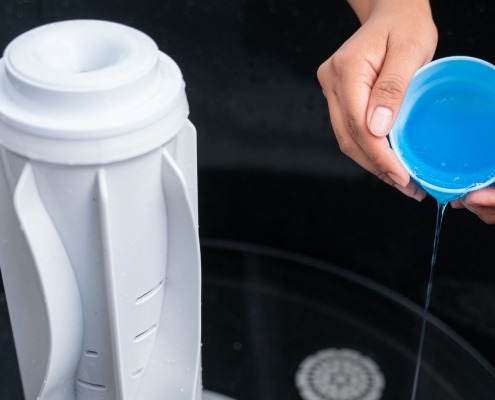How to Fix Frozen Washing Machine Pipes
Steven E / Wednesday April 16, 2025
Winter weather sometimes creates unexpected challenges in your home, frozen washing machine pipes being one of them. When you notice that your washer stops functioning properly or water fails to reach it, the culprit might be icy pipes. This guide walks you through safe, practical steps to thaw and repair your frozen pipes so you can get back to your regular laundry routine.
What Causes Pipes to Freeze?
Frozen pipes occur when the water inside your washing machine’s supply lines freezes due to extremely cold temperatures, poor insulation, or pipes placed in unheated areas like basements, garages, or near exterior walls. As water freezes, it expands and may create cracks or breakages that stop your appliance from functioning. Recognizing the early signs of a freeze can help you act fast and avoid more extensive damage.
When temperatures drop below 32°F (0°C), water inside exposed or poorly insulated pipes can solidify. Many washing machines are installed in spaces that are not heated year-round, making their water lines especially vulnerable during winter.
Signs You Might Have Frozen Pipes
- No water coming through the washing machine tap.
- Icy buildup or frost along visible sections of the pipes.
- A sudden drop in water pressure or complete water loss.
- Visible cracks or bulging in the insulation surrounding the pipe.
Basic Safety Guidelines
Safety is important when making repairs. Following these precautions will help you avoid potential hazards like water damage, burns, or accidental electrical shock.
- Turn off the power: Unplug your washing machine before beginning any repairs. This precaution is especially important when working near water.
- Close the water supply: Shut off the main water valve or the specific valve supplying your washing machine.
- Wear protective gear: Use gloves and safety glasses to protect your hands and eyes from potential burns or cuts.
- Clear the work area: Remove any clutter around the washing machine to prevent accidents and provide clear access to the affected pipes.
Tools and Materials Needed for the Fix
Good news: you likely already have many of the items required around your home. Here’s a list of basic tools and materials that will aid you in thawing your frozen pipes safely:
- Hair dryer or heating pad
- Warm towels
- Bucket
- Cloth or sponge
- Insulating pipe sleeves
- Tape or sealant
- Flashlight
Steps to Thawing and Repairing Frozen Pipes
Below is a detailed, step-by-step process to help you safely thaw your frozen washing machine pipes and repair any minor issues that may have arisen.
Step 1: Identify the Frozen Section
- Carefully inspect the pipes connected to your washing machine. Look for visible ice or areas that feel significantly colder than others.
- Run your hand gently along accessible parts of the pipe to detect cold spots, remember, avoid direct contact with very icy areas.
- Note the exact location of the blockage. Knowing whether the freeze occurs near a visible joint or the faucet helps in applying heat more effectively.
Step 2: Shut Off the Water and Power
- Locate the water shut-off valve and turn it off to prevent further water from entering the frozen area.
- Unplug your washing machine from the electrical outlet to ensure safety while working around water.
Step 3: Gently Thaw the Pipes
Your objective is to gradually melt the ice within the pipe, reducing the risk of damage or additional leaks.
- Using a hair dryer: Set your hair dryer to a low or medium heat setting. Begin at the faucet, the end where water is dispensed, and work slowly backward toward the frozen portion. This approach helps avoid pressure buildup by encouraging the melting water to flow in the proper direction.
- Alternate method: If you do not have a hair dryer, wrap the affected area with warm, wet towels. Replace these towels frequently to ensure a steady source of warmth.
- Consistency is key: Apply heat gradually. Do not use high heat, as sudden increases can cause the pipe to crack or sustain burn marks.
Step 4: Monitor the Thawing Process
- Periodically check for water flow. Keep a bucket underneath the pipe to catch any drips as the ice melts.
- Continue to slowly warm the area until you see steady water flow emerging from the pipe.
- If you notice any signs that the pipe might be cracked (such as bulging or persistent drips), slow down the process and adjust the heat source accordingly.
Step 5: Inspect for Leaks and Repair Minor Damage
Once the ice has fully melted, it’s essential to inspect the pipe for any damage that occurred during the freeze.
- Dry the area with a cloth and look carefully for minor cracks or bubbles along the pipe’s surface.
- If you find a small leak or crack, use plumbing tape or sealant to apply a temporary patch on the damaged section.
Step 6: Restore the Water Supply Gradually
- With the freeze resolved and any leaks temporarily sealed, slowly turn the water supply back on. This gradual approach helps prevent sudden pressure surges.
- Observe closely as water begins to flow, checking once again for leaks or unusual pressure changes. If you detect any issues, shut off the water and reassess your repair work.
Step 7: Run a Test Cycle
- With the water supply on, run a short cycle on your washing machine.
- Listen for any unusual noises that might suggest a continuing issue with water flow.
- Inspect all pipe connections for leaks or drips once the cycle begins.
Preventative Measures to Keep Your Pipes Freezing-Free
Prevention is the best cure, and with a few proactive steps, you can reduce the risk of frozen washing machine pipes in the future.
- Insulate your pipes: Apply foam insulation or specialized pipe sleeves, especially to pipes located in unheated or draft-prone areas.
- Seal gaps: Use weather stripping or caulking around windows, doors, and any openings in walls near your pipes to keep cold air at bay.
- Let faucets drip: During extreme cold, leave a slow drip from your washing machine tap. This slight, continuous flow of water helps prevent freezing by keeping liquid moving.
- Improve ambient heat: If possible, use space heaters or improve the heating in areas where your washing machine and its pipes reside.
Where To Get More Help
Fixing frozen washing machine pipes is easier than it sounds. With a few simple steps, you can thaw the lines and prevent future issues. Knowing how to fix frozen washing machine pipes helps keep your laundry running smoothly all winter.
If you need any replacement parts for your appliances, you can enter your model number at AppliancePartsPros.com to locate and order them quickly. Most orders arrive in just two business days, and we have tons of great information in our repair help section and YouTube videos to help you troubleshoot.
Stay connected with the latest DIY tips, tutorial videos, and repair guides by following us on Facebook, Instagram, and Twitter. We love hearing about your repair stories and successes. If you need more help or want personalized guidance, feel free to reach out. We’re ready to help you take on your next project with confidence!
The information in this article may not apply to your specific appliance model. We recommend consulting your manufacturer’s documentation or contact us with any questions.
With nearly a decade of experience in providing top-notch customer service regarding appliance parts and repair, Steven enjoys sharing practical advice, troubleshooting tips, and interesting information to help readers stay informed.





